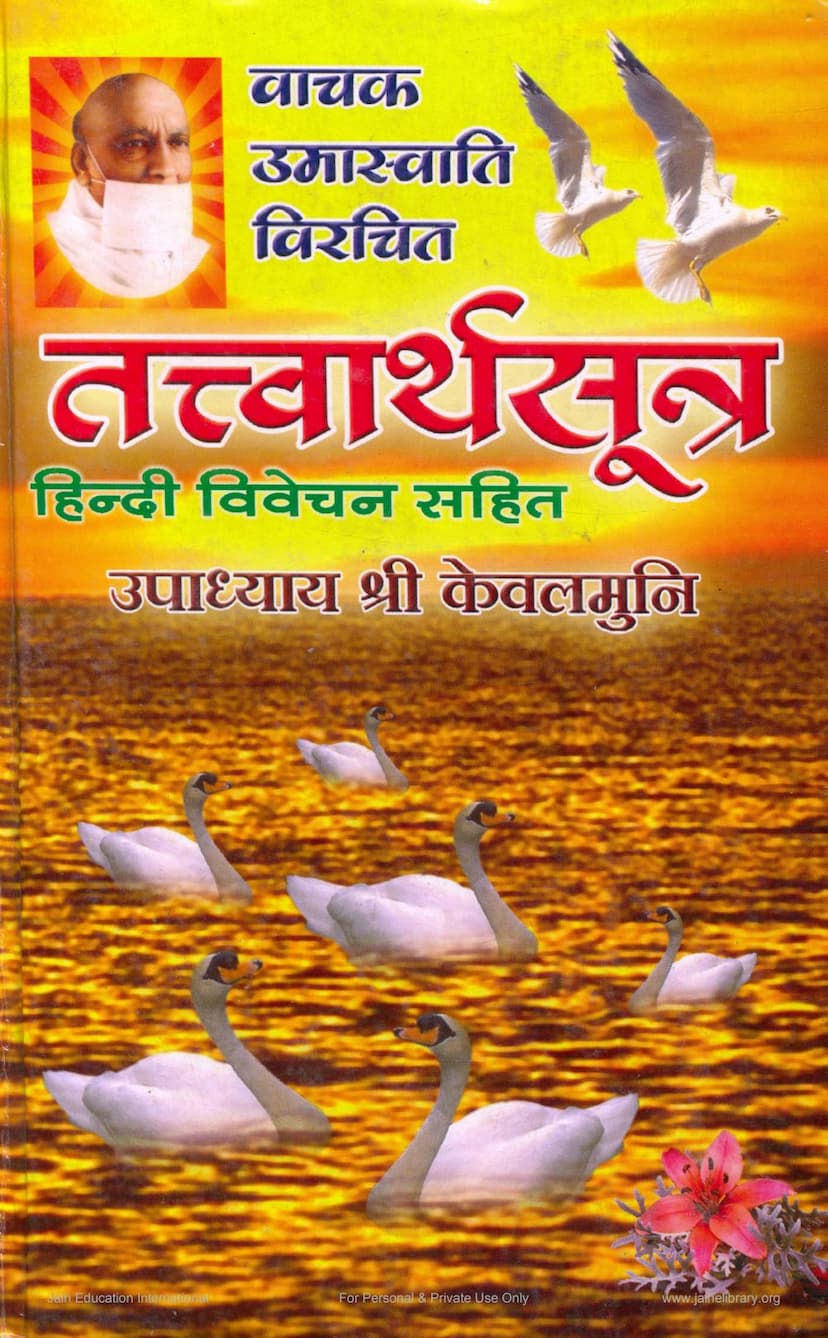Tattvartha Sutra
Added to library: September 2, 2025

Summary
This Jain text, the Tattvartha Sutra, authored by Vachak Umaswati and explained by Upaadhyay Shri Keval Muni, with editing by Shreechand Surana 'Saras', is a foundational scripture in Jainism. Published by Kamla Sadhanodaya Trust, this is the second edition, released in August 2005.
The Tattvartha Sutra is highly revered in both the Digambara and Shvetambara Jain traditions. It is considered an "Agam Darpan" (mirror of Jain scriptures), providing an introduction to Jain philosophy, religion, and conduct. The author, Umaswati, aimed to present the essence of Jain teachings in a concise yet profound manner, making it accessible to all seekers of moksha (liberation).
The book is structured into ten chapters, each delving into fundamental Jain principles:
-
Chapter 1: Moksha Marga (The Path to Liberation) - This chapter outlines the "Ratnatraya" (Three Jewels) – Right Faith (Samyak Darshan), Right Knowledge (Samyak Gyan), and Right Conduct (Samyak Charitra) – as the means to achieve liberation. It elaborates on the nature of these jewels, their attainment, and the subtle distinctions between various types of right faith and knowledge.
-
Chapter 2: Jiva Vicharana (Consideration of the Soul) - This chapter details the nature of the soul (Jiva), its states (Bhavas), its various classifications (Jiva and Ajiva), the senses, life span, bodies, and the process of transmigration.
-
Chapter 3: Adholoka and Madhyaloka (Nether and Medieval Regions) - This chapter describes the lower realms (Naraka Loka) and the middle realm (Madhyaloka). It details the seven hellish regions, their inhabitants (Narakis), their suffering, and the geographical and cosmological aspects of these realms. It also covers the structure of the middle world, including the Jambu continent, Mount Meru, and the various regions inhabited by humans and animals.
-
Chapter 4: Urdhvaloka - Dev Nikaya (Upper Region - Heavenly Realms) - This chapter focuses on the heavenly realms (Deva Loka). It describes the four types of heavenly beings – Bhavanavasis, Vyantaras, Jyotishkas, and Vaimanikas – their residences, characteristics, lifespans, and the celestial arrangements, including the planets, stars, and constellations. It also touches upon the concept of modern scientific astronomical beliefs in comparison.
-
Chapter 5: Ajiva Tattva Varnan (Description of Non-living Elements) - This chapter explains the non-living elements (Ajiva Tattva) of Jainism: Dharma (medium of motion), Adharma (medium of rest), Akasha (space), Pudgala (matter), and Kala (time). It elaborates on their characteristics, such as being eternal, spaceless, and having specific functions.
-
Chapter 6: Asrava Tattva Vicharana (Consideration of the Inflow of Karmic Matter) - This chapter focuses on Asrava, the process by which karmic particles attach to the soul. It explains how passions (Kashayas), senses, ignorance (Mithyatva), neglect of vows (Avirati), carelessness (Pramada), and activities of mind, speech, and body (Yoga) lead to the inflow of karma.
-
Chapter 7: Achar (Virati-Samvara) (Conduct) - This chapter outlines the path of conduct for spiritual advancement. It details the vows (Anuvratas and Mahavratas), their subdivisions, and the 'Bhavanas' (contemplations) that strengthen them. It also describes the 'Aticharas' (minor transgressions) related to each vow and the importance of virtuous conduct, including the concept of donation (Dana).
-
Chapter 8: Bandha Tattva (Principle of Bondage) - This chapter elaborates on Bandha, the principle of how karmic matter binds to the soul. It details the causes of bondage (Mithyatva, Avirati, Pramada, Kashaya, Yoga), the four types of bondage (Prakriti, Sthiti, Anubhava, and Pradesha Bandha), and the specific causes for the inflow of various karmas like Jnanavaraniya, Darshanavaraniya, Vedaniya, Mohaniya, Ayushya, Nama, Gotra, and Antaraya.
-
Chapter 9: Samvara and Nirjara (Check and Annihilation of Karmic Particles) - This crucial chapter describes Samvara, the cessation of karmic inflow, and Nirjara, the shedding of existing karma. It details the practices leading to Samvara, such as the three Guptis (control of mind, speech, and body), five Samitis (carefulness in conduct), ten Dharmas (virtues), twelve Anuprekshas (contemplations), twenty-two Parishahas (endurances), and five Charitras (conducts). It then explains the twelve types of austerities (Tapas) – both external and internal – and the four types of meditation (Dhyana) that lead to Nirjara.
-
Chapter 10: Moksha (Liberation) - This final chapter describes Moksha, the ultimate goal of Jainism. It explains the nature of liberation, the process of achieving it through the complete annihilation of all karmas, and the state of the liberated soul (Siddha). It describes the characteristics of the Siddha soul, their eternal bliss, omniscience, and their abode in the Siddhashila at the crown of the universe.
The Tattvartha Sutra is praised for its comprehensive coverage of Jain philosophy and practice, its logical reasoning, and its accessibility. It serves as a guide for both ascetics and householders on the path to spiritual purification and ultimate liberation. The commentary by Upaadhyay Shri Keval Muni further illuminates the depth and intricacies of this sacred text.